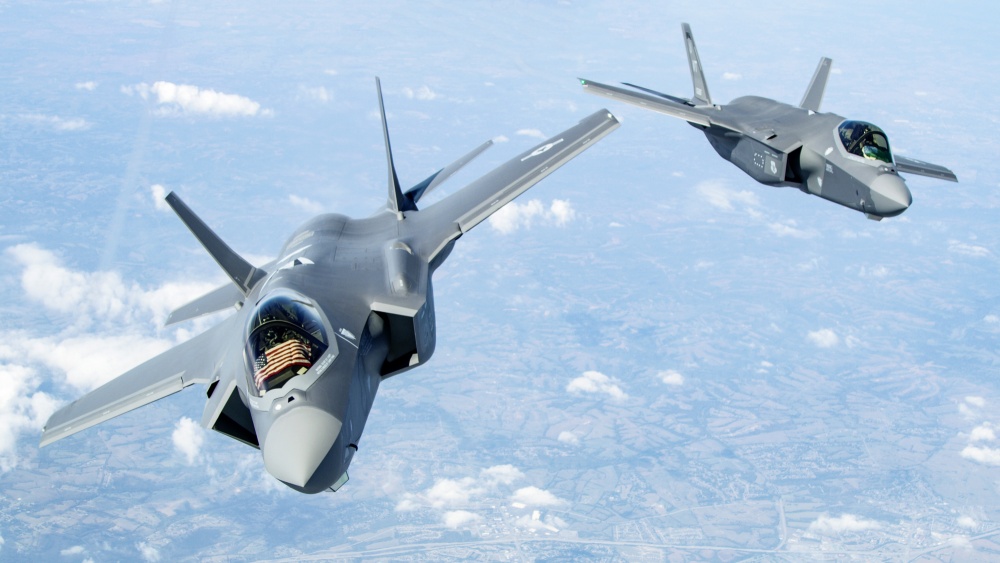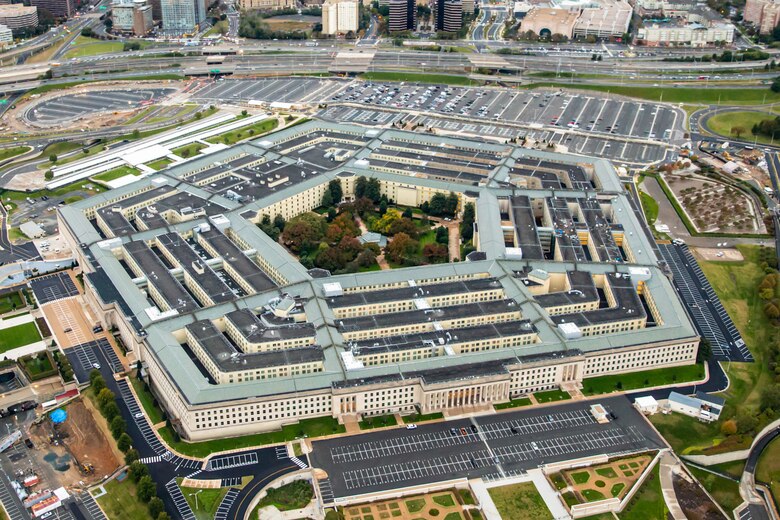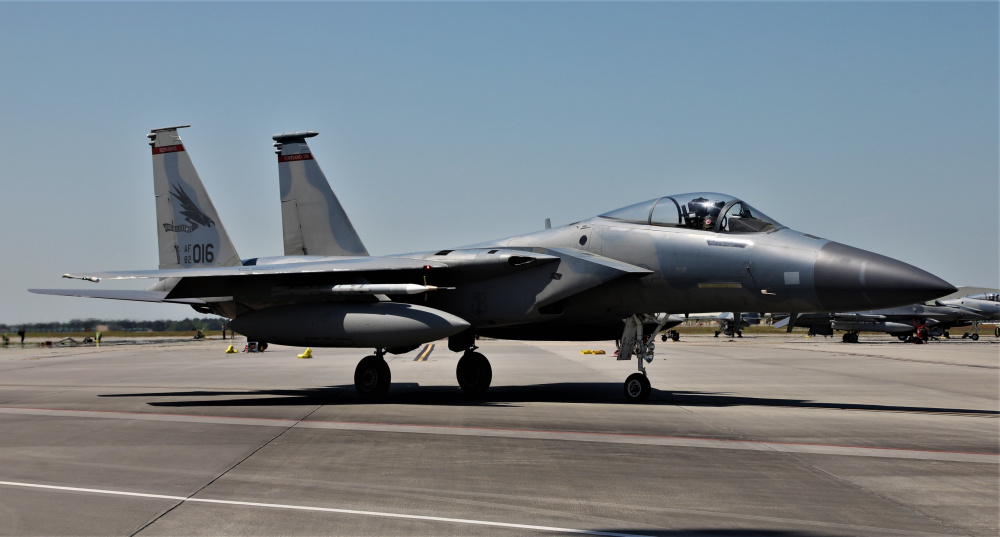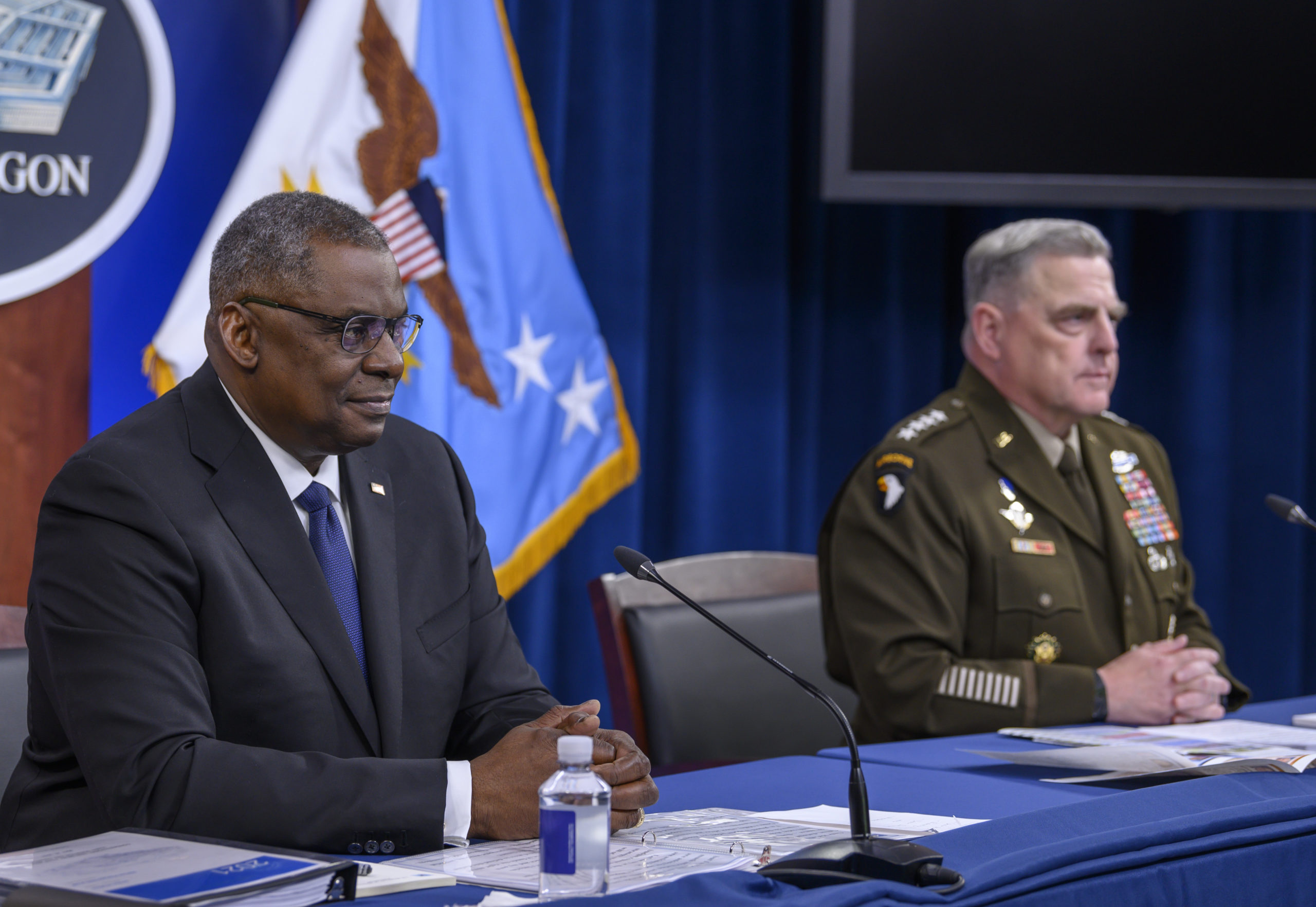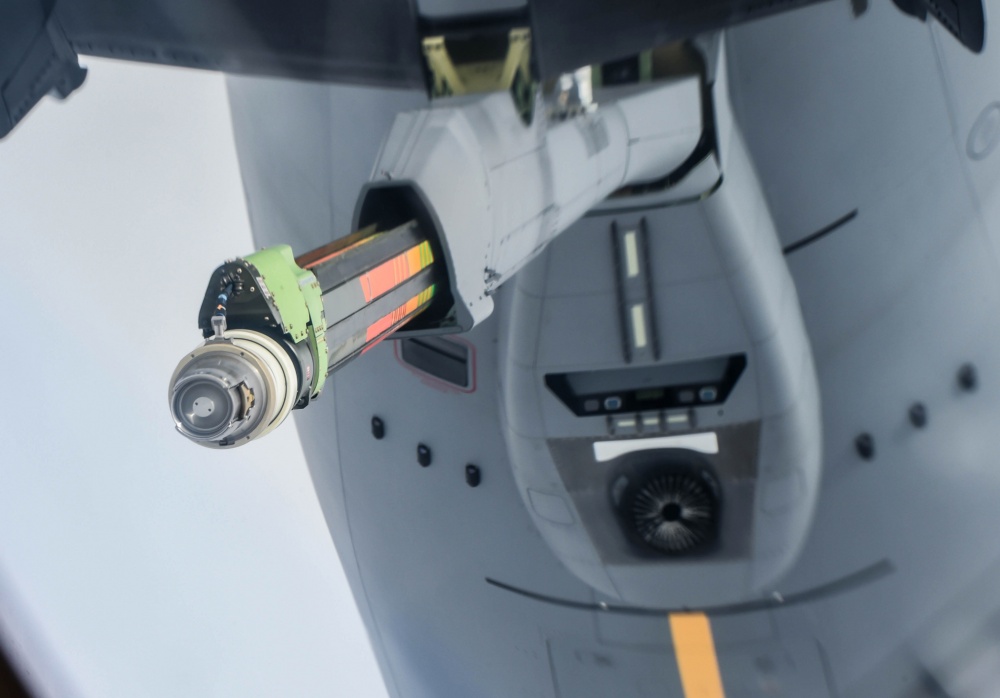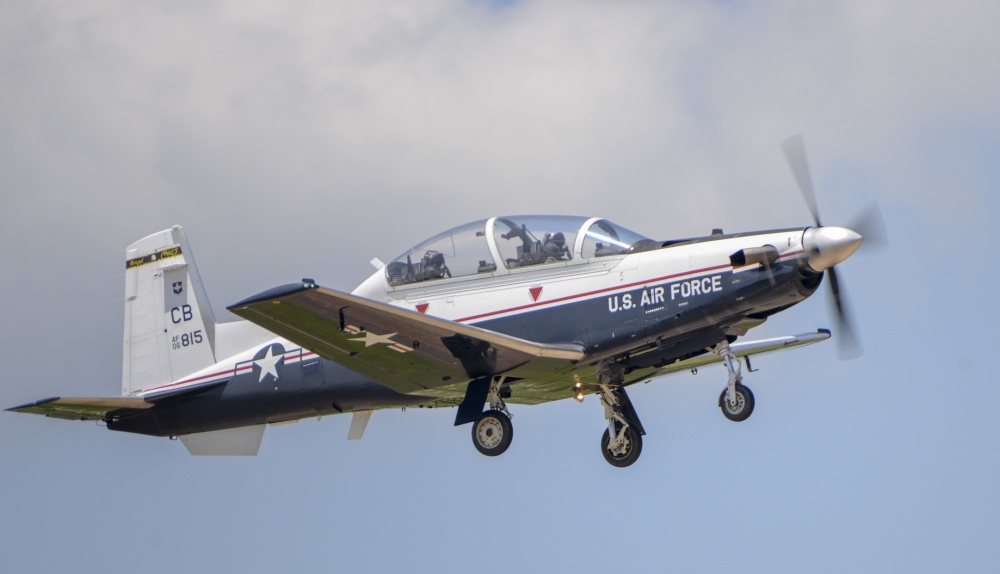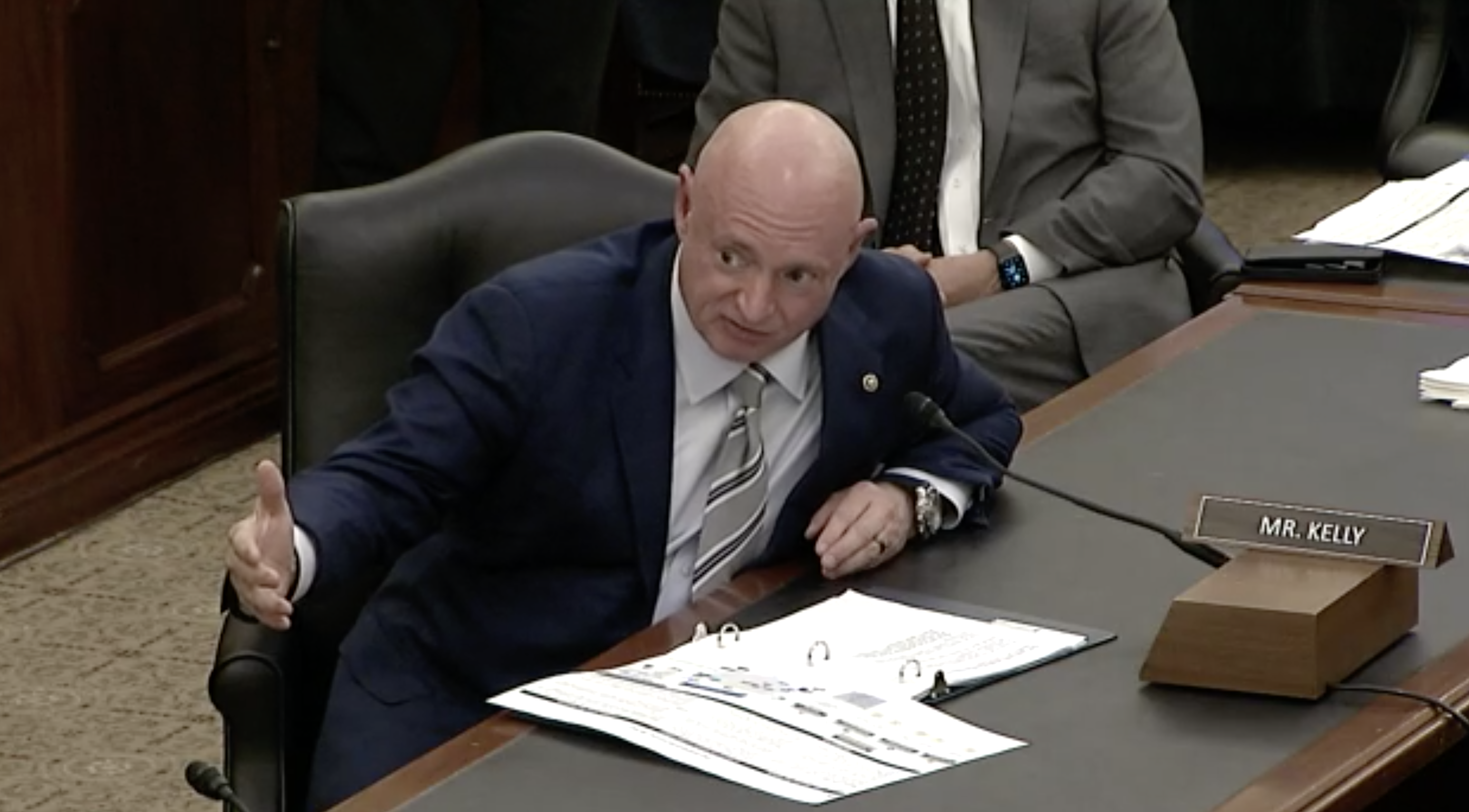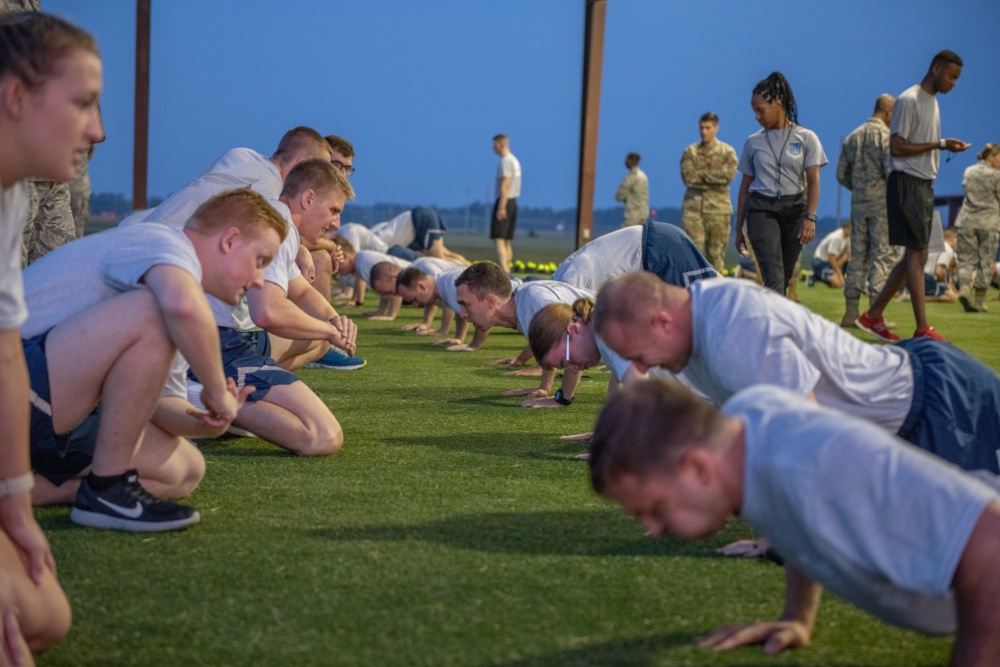The Department of the Air Force is asking for $212.8 billion in fiscal 2022, including $39 billion in “pass-through” funding, which is not controlled by USAF and goes to other mostly classified defense activities. The amount represents an increase of $7.3 billion over the enacted 2021 budget of $205.5 billion, for an increase of about 3.3 percent, or roughly flat, when inflation is taken into account.
Counting the “pass-through” funding, which is more than double the U.S. Space Force’s total budget, the Department of the Air Force’s budget appears to be the largest of the military services, edging out the Navy by just $1 billion.
Subtracting the pass-through, however, the Department of the Air Force’s funding falls to $173.7 billion, nearly tied with the Army for the lowest budget among the military services, despite defense leadership touting the Air Force and Navy as the primary forces for dealing with the Indo-Pacific theater. Of that $173.7 billion, the Air Force gets just $156.3 billion while the U.S. Space Force gets $17.4 billion.
Strategically, the Air Force spending plan emphasizes modernization, with “focused investments” to deal with China as the pacing threat to the U.S., along with other threats. It divests legacy systems, continues with buying new systems for strategic deterrence, “advances” key weapons and technologies, buys new aircraft and aims to “tackle the climate crisis,” particularly as it threatens USAF facilities at risk from rising sea levels, strengthening storms, and wildfires.
To help pay for modernization, USAF is asking to divest 201 aircraft in 2022—out-years spending in the future years defense program were not released with the budget—offset by bringing on just 91 new airplanes, saving $1.4 billion in the coming fiscal year to put toward new capabilities.
The defense budget overall proposes a 2.7 percent increase in both military and civilian pay. The department’s total force end strength would grow by 3,400 persons, to 515,300 people in 2022. The Active-duty end strength of the Air Force, however, would actually fall by 751 people to 328,300 people. Service officials said the level is essentially flat, having to do with the status of medical personnel brought on to deal with the COVID-19 pandemic.
In addition to setting people programs as a high priority, the Air Force budget targets sexual harassment and assault and “extremism in the ranks,” the service saying it will “ensure accountable leadership” in these areas, according to budget documents.
Finally, the spending plan is designed to build tighter relationships with partners and allies and “build unity” with the other services.
Air Force’s Spending Plans
To meet those goals, the Air Force has “fully funded” the nuclear enterprise, continuing the Ground Based Strategic Deterrent, Long-Range Standoff missile, and the National Command, Control, and Communications infrastructure development programs, as well as development of the B-21 bomber. It “advances” the Next-Generation Air Dominance system to succeed today’s fifth-generation fighters; funds both boost-glide and air-breathing hypersonic missiles; modernizes the B-52 with new radar, engines, and connectivity, and “maximizes” production of the Joint Air-to-Surface Standoff Missile-Extended Range and the Long Range Anti-Ship Missile conventional stealth missiles. The budget calls for 48 new F-35 fighters, 12 F-15EX fighters—“to ensure near-term readiness”—and continues improving the F-22 fighter with advanced sensors. It also buys 14 combat rescue helicopters and builds Advanced Battle Management System technology.
Operations and maintenance accounts claim 40 percent of the requested monies, at $63.2 billion, while personnel costs account for 25 percent, or $38.4 billion. Research, development, test, and evaluation would get 18 percent, or $28.8 billion; procurement would be 15 percent, or $22.9 billion, and military construction two percent, or $2.9 billion.
In operations and maintenance, flying hours would be reduced slightly, from $7.8 billion enacted in 2021, to $7.6 billion in 2022, a reduction of 87,000 hours.
Air Force deputy assistant secretary for budget Maj. Gen. James D. Peccia III, briefing the press on the budget, said the reduced flying hours could be attributed to “the change in global posture overseas,” including reduced operations in Afghanistan, which accounted for 66,000 hours of the reduction.
The remaining hours “were really risk that we could take on peacetime flying,” Peccia said. He noted that the Air Force hasn’t been able to execute its full flying hour program for a few years, and the change reflects that reality. The same approach was taken in 2021, he said.
Because the Pentagon has eliminated the Overseas Contingency Operations, the separate war account known as OCO, those costs are absorbed in USAF’s base budget and account for $7.9 billion of the O&M accounts as “direct war and enduring costs.” Including personnel and other costs, such as replacement of materiel, the total war cost estimate is $10.1 billion for the Air Force, which, with the elimination of the OCO account, comes out of hide.
The pay raise costs $573 million for uniformed personnel and $361 million for civilians, with another $183 million for civilian bonuses and awards. USAF is asking for a 3.8 percent increase in the basic allowance for housing, at a cost of $221 million, and a 2.3 percent increase in the basic allowance for subsistence, costing $56 million.
In RDT&E, the $28.8 billion requested in 2022 represents an increase of $200 million over the 2021 enacted amount. The biggest item in these accounts is the B-21, which would grow by $30 million to accommodate preparation for initial production, from $2.843 billion to $2.873 billion. The GBSD is set to nearly double, from $1.447 billion to $2.554 billion. The NGAD would grow by more than 50 percent, from $902 million to $1.525 billion.
Development of the F-35 would increase from $816 million to $1.055 billion, as the Block 4 upgrade takes shape and the Tech Refresh 3, which underlies it, is improved. Development of new radars, engines, and connectivity for the B-52 would see an increase from $483 million to $716 million.
The Advanced Battle Management System, centerpiece of USAF’s connectivity push, would see an RDT&E increase of just $46 million, to $204 million. The Air Force said this increase mostly funds “info sharing across fifth-gen [tactical air] and [command and control] nodes.” Hypersonics weapon development—and specifically “prototyping” of the Air-launched Rapid Response Weapon (ARRW), Southern Cross Integrated Flight Research Experiment (SCIFIRE), and Hypersonic Attack Cruise Missile (HACM) systems—would increase from $386 million to $438 million. The Air Force told Air Force Magazine that spending on new test facilities and wind tunnels for hypersonic systems development adds up to only $2,000.
In procurement accounts, the Air Force sees a decrease from $26.1 billion in 2021 to $22.9 billion in 2022. It will buy 48 F-35 fighters for a cost of $5.095 billion, 12 F-15EX fighters for $1.335 billion, 14 KC-46A tankers for $2.6 billion, 14 HH-60W Combat Rescue Helicopters for $930 million, and other aircraft. The Air Force updates sensors on the F-22 for $468 million in fiscal ’22.
USAF requests a steep drop in procurement of Joint Direct Attack Munition bombs, from 16,800 in 2021 to just 1,919 in 2022. Peccia said the service is “comfortable with where we are” on JDAM inventories and decided to reduce the buy and put the money toward developing new weapons.
Purchases of Small Diameter Bomb 1 would likewise decrease from 2,462 in fiscal ’21 to 998 in ’22. The SDB II buy would grow slightly, from 743 in ’21 to 998 in ’22. The AGM-114 Hellfire, AIM-9 Sidewinder, and AIM-120 AMRAAM missiles all would see reductions, as well.
Senior Pentagon leaders touted sharply increased production of the stealthy, long-range AGM-158 JASSM-ER, from 400 units in ’21 to 525 rounds in ’22, describing the missile as key to a counter-China strategy.
For the first time, the Air Force gave procurement numbers for the AGM-183A ARRW hypersonic missile, saying USAF will buy 12 rounds in 2022 at a cost of $161 million, for a unit price of $13.4 million each. Pentagon officials said the objective price of the weapon will be much lower, but the Air Force did not offer any official out-years insight into its cost.
Air Force military construction projects total $2.924 billion in 2022, up 40 percent from the $1.77 billion enacted in 2021. Of these, bed-down projects for the B-21, KC-46, and F-35 total $333 million, $160 million, and $129 million, respectively, with another $62 million supporting Air National Guard projects for the F-35, F-16, and C-130. Three GBSD-related construction projects would get $98 million in total.
The Air Force would also buy two new dormitories for basic military training worth $172 million, projects worth $185 million supporting the European Deterrence Initiative, 13 projects in the Indo-Pacific worth a collective $572 million, and $105 million for family housing projects.
Retired Lt. Gen. Bruce “Orville” Wright, president of the Air Force Association, said the budget submission is evidence that Chief of Staff Gen. Charles Q. Brown Jr. is “doing what he promised: accelerating change.” Congress and the Defense Department now “need to do their part to ensure that capacity traded away today for capability tomorrow is not lost forever, but ultimately replaced with the capacity needed to deter any and all adversaries and to fight and win when needed.”
Wright said the “pass-through” budget “deprives both the Air Force and Space Force of the funds they need to modernize and equip their forces.”
Douglas Birkey of AFA’s Mitchell Institute for Aerospace Studies said that while it’s one thing to retire KC-10s “knowing that a KC-46 will backfill” it, it’s “quite another to retire an aircraft and hope the requirement will be filled years from now.” The Air Force has “almost always lost” the game of trading current capacity for future capability, he said, adding “numbers still matter.” Congress has yet to weigh in, and the Air Force “has yet to secure its full support” for its approach.
The service “needs to either better communicate the requirement, or adjust plans, understanding that support remains weak.” He also said it’s unrealistic to expect that two services—the Air Force and Space Force—“will be able to exist within the confines of funding originally allocated to one,” a problem exacerbated by the “pass-through” problem.
